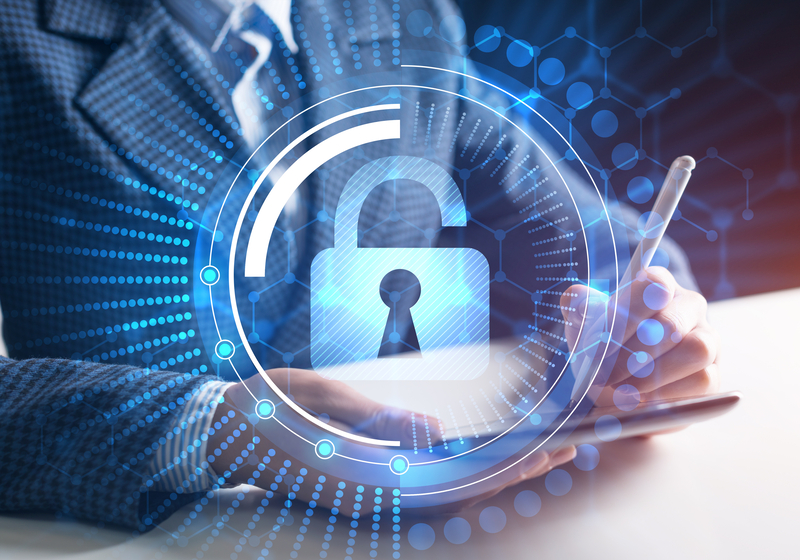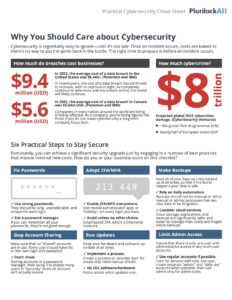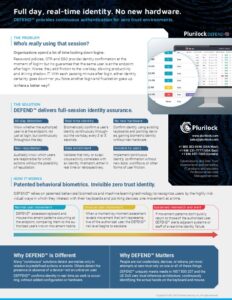In the increasingly interconnected digital landscape, the importance of safeguarding sensitive information and maintaining secure access to resources cannot be overstated. Identity and Access Management (IAM), often referred to as IdM (Identity Management), has emerged as a critical component of modern cybersecurity strategies. This comprehensive deep dive explores what IAM is, why it matters, and delves into an in-depth analysis of its importance in securing digital assets.
Understanding Identity and Access Management (IAM)
At its core, Identity and Access Management (IAM) is a framework of policies, processes, and technologies that ensures the right individuals have appropriate access to resources within an organization’s IT environment. These resources could include systems, applications, data, networks, and more. IAM systems play a pivotal role in controlling, managing, and monitoring user identities and their associated access rights throughout their lifecycle – from onboarding to retirement.
IAM encompasses a range of functionalities, including:
- Authentication: The process of verifying the identity of users, usually through passwords, multi-factor authentication (MFA), biometrics, or smart cards.
- Authorization: Granting or denying access rights based on an individual’s authenticated identity and their roles within the organization.
- Account Management: Creating, modifying, and deleting user accounts while maintaining accurate user information.
- Single Sign-On (SSO): Allowing users to access multiple applications with a single set of login credentials, enhancing user experience while maintaining security.
- Role-Based Access Control (RBAC): Assigning permissions based on predefined roles and responsibilities, simplifying access management and reducing human error.
- Privileged Access Management (PAM): Controlling and monitoring access for privileged accounts to mitigate insider threats and external attacks.
The Significance of IAM
1. Security Enhancement
IAM serves as a critical defense mechanism against unauthorized access and data breaches. By ensuring that only authorized users can access specific resources, organizations can minimize the risk of data exposure, leakage, or unauthorized modifications. The combination of strong authentication methods and proper authorization mechanisms significantly enhances security posture.
2. Regulatory Compliance
In today’s regulatory landscape, numerous laws and regulations (such as GDPR, HIPAA, and PCI DSS) mandate the protection of sensitive data and user privacy. IAM systems play a pivotal role in helping organizations adhere to these compliance requirements by enforcing access controls, tracking user activities, and maintaining auditable records.
3. Minimization of Insider Threats
Insider threats, whether intentional or accidental, pose a significant risk to an organization’s security. IAM solutions help mitigate this risk by providing fine-grained access controls, thereby restricting even privileged users’ access to only the resources necessary for their roles. Additionally, IAM systems monitor user activities and can alert administrators to unusual behavior.
4. Efficient User Lifecycle Management
IAM solutions streamline user lifecycle management processes. From onboarding new employees and granting them the appropriate access, to automating access revocation when an employee changes roles or leaves the organization, IAM systems ensure that access rights align with an individual’s responsibilities at any given time. This reduces the likelihood of security gaps due to outdated permissions.
5. User Experience and Productivity
While IAM’s primary focus is security, it also contributes to a positive user experience. Single Sign-On (SSO) solutions, for instance, allow users to access multiple systems without the hassle of remembering multiple passwords. This improves productivity and reduces password-related support requests.
6. Scalability and Centralized Management
For organizations with complex IT infrastructures, managing user identities and access rights can become an unwieldy task. IAM systems offer centralized management, allowing administrators to efficiently control access across a myriad of applications, systems, and platforms. This is crucial for maintaining security as organizations grow.
In-Depth Analysis of IAM’s Importance
1. Zero Trust Architecture
The traditional network security model assumed that threats were external and, once inside the network, entities could be trusted. However, the rise of sophisticated attacks has shattered this assumption. The Zero Trust architecture, which advocates for a “never trust, always verify” approach, aligns closely with IAM principles. IAM’s emphasis on strong authentication, continuous monitoring, and the principle of least privilege resonates well with the Zero Trust model. By implementing IAM, organizations can establish a robust security foundation that aligns with contemporary threat landscapes.
2. Privileged Access Management (PAM) and Zero Standing Privileges (ZSP)
Privileged accounts, such as administrator or root accounts, have elevated access rights and can potentially wreak havoc if compromised. Privileged Access Management (PAM) is a subset of IAM that focuses on managing and monitoring these accounts. A concept within PAM known as Zero Standing Privileges (ZSP) dictates that privileged access should only be granted when needed and with strict justification. ZSP aims to eliminate the continuous privileged access that attackers can exploit. Implementing PAM with ZSP not only prevents unauthorized privilege escalation but also ensures that critical actions are performed with an additional layer of oversight.
3. IAM and Cloud Security
As organizations migrate to cloud environments, ensuring proper IAM becomes paramount. Cloud environments are dynamic and highly scalable, making manual access management impractical. IAM solutions designed for the cloud enable organizations to manage user identities and access rights seamlessly across a variety of cloud services. This centralization simplifies access management, enhances security, and facilitates compliance in cloud ecosystems.
4. IAM Analytics and Artificial Intelligence (AI)
IAM systems generate a wealth of data regarding user activities, access patterns, and authentication behaviors. Applying advanced analytics and AI to this data can uncover insights into potential security threats, such as unusual access patterns or anomalies. Machine learning algorithms can help identify suspicious activities and trigger alerts in real-time, enabling proactive response to potential breaches.
5. IAM and DevOps
In modern software development practices, DevOps emphasizes rapid and iterative deployments. This can lead to challenges in maintaining security while enabling agility. IAM solutions can be integrated into DevOps pipelines, ensuring that security controls are not bypassed during the development and deployment process. This integration ensures that only authorized individuals can access and modify the codebase, reducing the risk of introducing vulnerabilities.
6. User Privacy and Consent Management
As data privacy regulations become more stringent, IAM solutions play a role in managing user consent and preferences. Users should have control over the data they share and the extent of access granted to service providers. IAM systems can facilitate the implementation of user consent management mechanisms, ensuring compliance with regulations and enhancing trust between users and organizations.
Conclusion
Identity and Access Management (IAM) has evolved from being merely a security feature to becoming a foundational element in modern cybersecurity strategies. Its role in safeguarding data, mitigating insider threats, enhancing compliance, and enabling efficient access management cannot be overstated. In an era where cyberattacks are increasingly sophisticated and privacy regulations are stringent, IAM provides organizations with the tools to maintain control over their digital assets and ensure a secure environment for users and data alike. As technology continues to advance, IAM will remain a cornerstone of cybersecurity, adapting to new challenges and innovations to keep organizations protected in an ever-changing digital landscape.
















